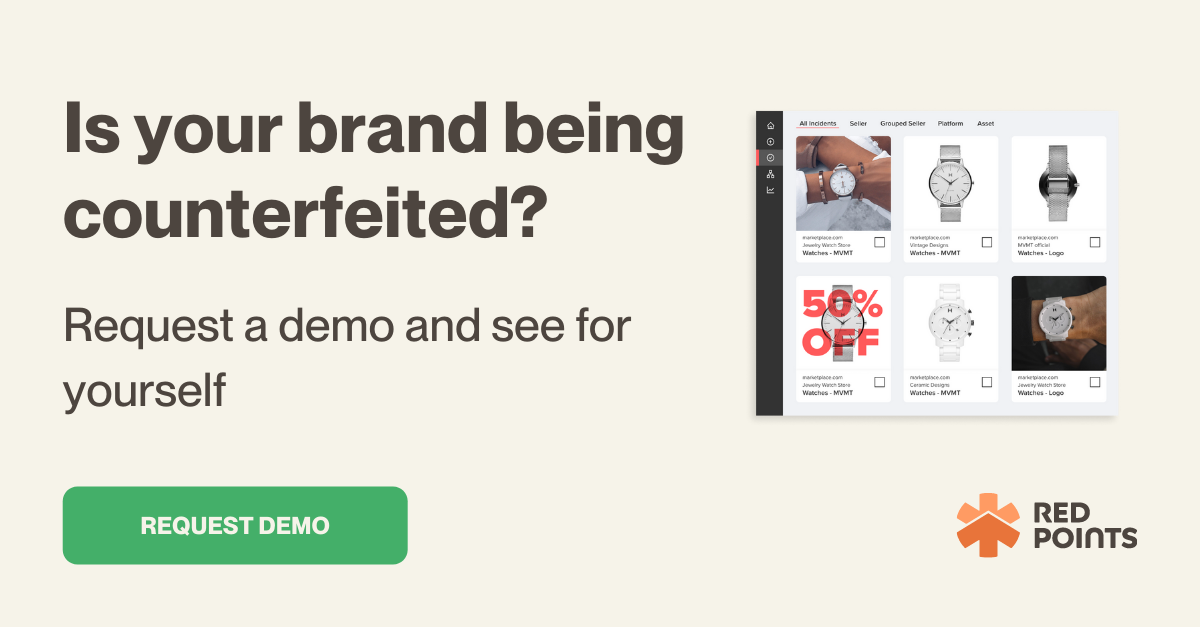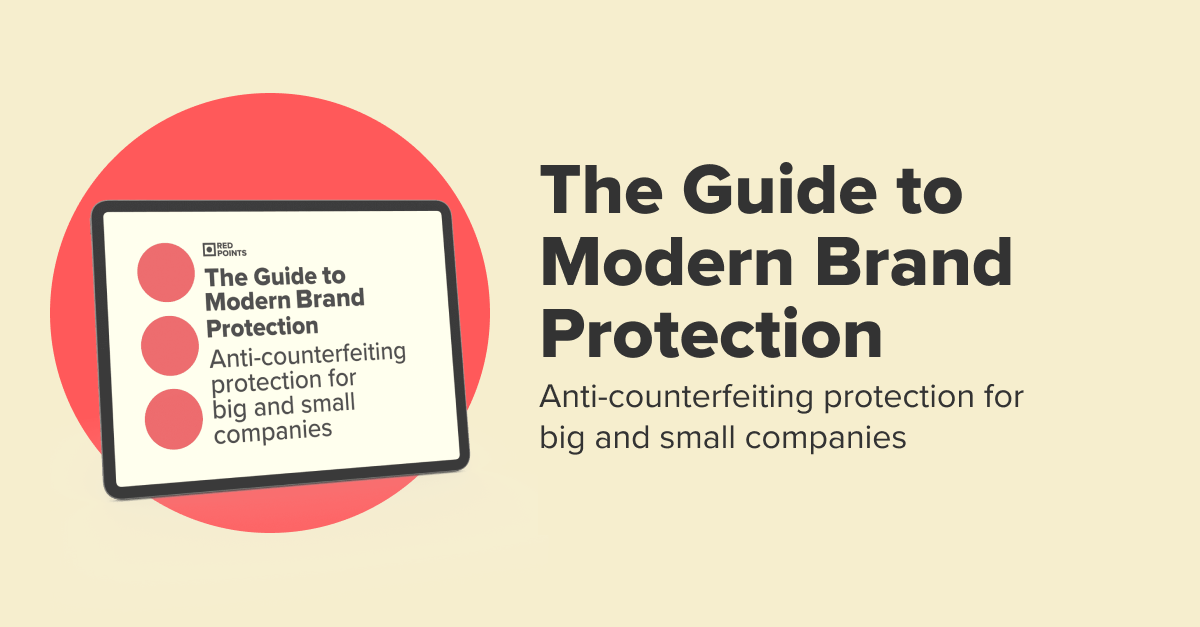Have an innovative idea for your new business? It’s important to ensure your unique business trademark is well-protected, no matter how new your business is. Cybercriminals don’t just scam large brands, and your small business could be at risk of being impersonated online. As brand protection experts, we know just how essential it is to protect your brand from scammers by registering for a business trademark.
Summary:
- How a business trademark can protect your new business
- What you should trademark in your new business
- How else can you ensure your brand is protected
Why it’s a good idea to register your trademark?
It’s a good idea to register your business trademark no matter how early you are in your brand journey because it protects your unique idea. Without this protection, it’s easier for scammers to get away with stealing your unique idea(s) for profit that you will never see.
With a business trademark, you have a much stronger ability to take down anyone infringing on your brand or mimicking your products online. Building a strong intellectual property portfolio early on will benefit you especially if you want to grow your business further. Scammers and infringements can steal sales and tank your brand reputation, which is especially detrimental to your new business, so protect it from the start.
Am I required to register my business name for trademark?
Trademarks, similar to copyrights, are automatically applied to a public brand, business name, or product once it’s in commercial circulation. So, no, you aren’t required to register your business name for a trademark, along with anything else in your brand.
You can still enforce your ownership over your business and intellectual property without a registered trademark, but it could make it more difficult. Trademarking your business gives you the best chance to take down counterfeit products and infringements as quickly and easily as possible.
Should I trademark a product name or a business name?
In most cases, you will definitely want to trademark your business name as this is a big brand identifier. You certainly don’t want potential customers finding a different brand when searching for yours because you had the same name. As for product names, it depends.
Trademarking product names is recommended when they are unique rather than general. Take Kleenex and Band-Aid for example: these product names are unique to the brand and therefore trademarked. If these brands simply referred to the products as ‘tissues’ or ‘bandages,’ those product names wouldn’t be trademarkable because they are too general.
How to register a business trademark
Whether it is your business or product name, your logo, or other trademarks, this section will come in handy and provide practical and valuable insights to go over the process. Let’s get right into it!
First and foremost, it’s important to notice that the registration must be filed exclusively with the USPTO, the United States Patent and Trademark Office. However, the first step takes place outside the platform:
1. Make sure you have a strong trademark
As stated above, not all names are trademarkable, so the first step would be making sure you have a unique, non-generic business or product name. If your trademark is too generic or maybe only describes the service or product you offer, it may not even be eligible to apply for a USPTO registration.
2. Likelihood of confusion
You have determined your trademark is eligible, way to go! The next sensible step would be to conduct a research to determine if someone else has already registered your trademark or a similar one. According to the USPTO, “one of the most common reasons trademark applications are rejected is because the applied-for trademark is too similar to an already registered one (…)”
This investigation can be carried out manually through the Internet, searching through domains and social media handles, for instance. Moreover, the USPTO also provides some resources, like the Trademark Electronic Search System (TESS) to search their database of registered and pending trademarks.
3. Application process
You’ve finally reached the registration process, which comes down to the following steps:
a) Go to the USPTO website and hover over the “Trademarks” tab. Select “Apply online”, under “Application process”.
b) Click Log in to TEAS and TEASi page, under “Log in to access forms”. If you don’t have an account, you need to create one. Click on Set up your USPTO.gov account and add your details.
c) You’re also going to need to verify your identity. So click on identity verification for trademark filers, also under “Apply online”. Then click Verify your identity and follow the steps.
d) Once you’ve completed these steps, you can move forward to the application and enter the owner information (Name, Entity type, Address, Phone number, Email address, etc.). There are two application styles you can choose from, the TEAS Plus and TEAS Standard applications.
e) Then you need to provide the trademark information, such as the business name or upload a design (in case of a logo).
f) Indicate the goods and services that are going to be associated with the trademark.
g) Specify your filing basis: “Use in commerce” or “Intent-to-use”.
h) Follow the last steps and pay the USPTO fees.
4. Trademark registration
After completing the above steps, your registration process is all set. Now you will have to wait for an examining attorney to be assigned to your application, which can take up to 10 months. The evaluation process will hopefully result in a successful registration.
How important is your business name to your business?
As the first impression customers get of your brand, your business name is vital in determining the future growth and success of your new business. Your brand name helps customers identify your products and creates trust in the quality of what they are buying.
If a scammer uses your business name to sell counterfeit products online, your entire brand is at risk of losing revenue and brand reputation. Once your brand is associated with bad-quality products that are actually counterfeits, it may be impossible to recover. Negative reviews and customer complaints can keep away new customers as well as cause loyal supporters to lose their trust in your brand.
Trademarking your business and unique product names is the first step you can take to protect your brand from these threats. Even if you are just starting out and aren’t sure where your business is going yet, having this protection will allow you to continue growing.
Can I put TM on my logo?
Yes, you can put the TM symbol on your logo, brand name, and brand products, even if they are not officially registered trademarks. The R symbol, on the other hand, can only be used on registered trademarks.
Why should you use the TM and R symbols on your logo and other intellectual property? While it doesn’t automatically guarantee your content will be protected from scammers, it can certainly deter them. These symbols show scammers and competitors you’re enforcing ownership over your IP, and any infringements may lead to legal repercussions.
What’s next
Registering your business trademark is a great first step to protect your brand, but the work doesn’t end there. Download the guide to learn more ways to ensure your brand is well-protected from online infringements and counterfeits.
If you’ve already started your business and have found listings that might be infringement on your products, don’t panic. Contact Red Points to learn how we can help take down counterfeits of your product(s) and protect your brand from further infringements online.






